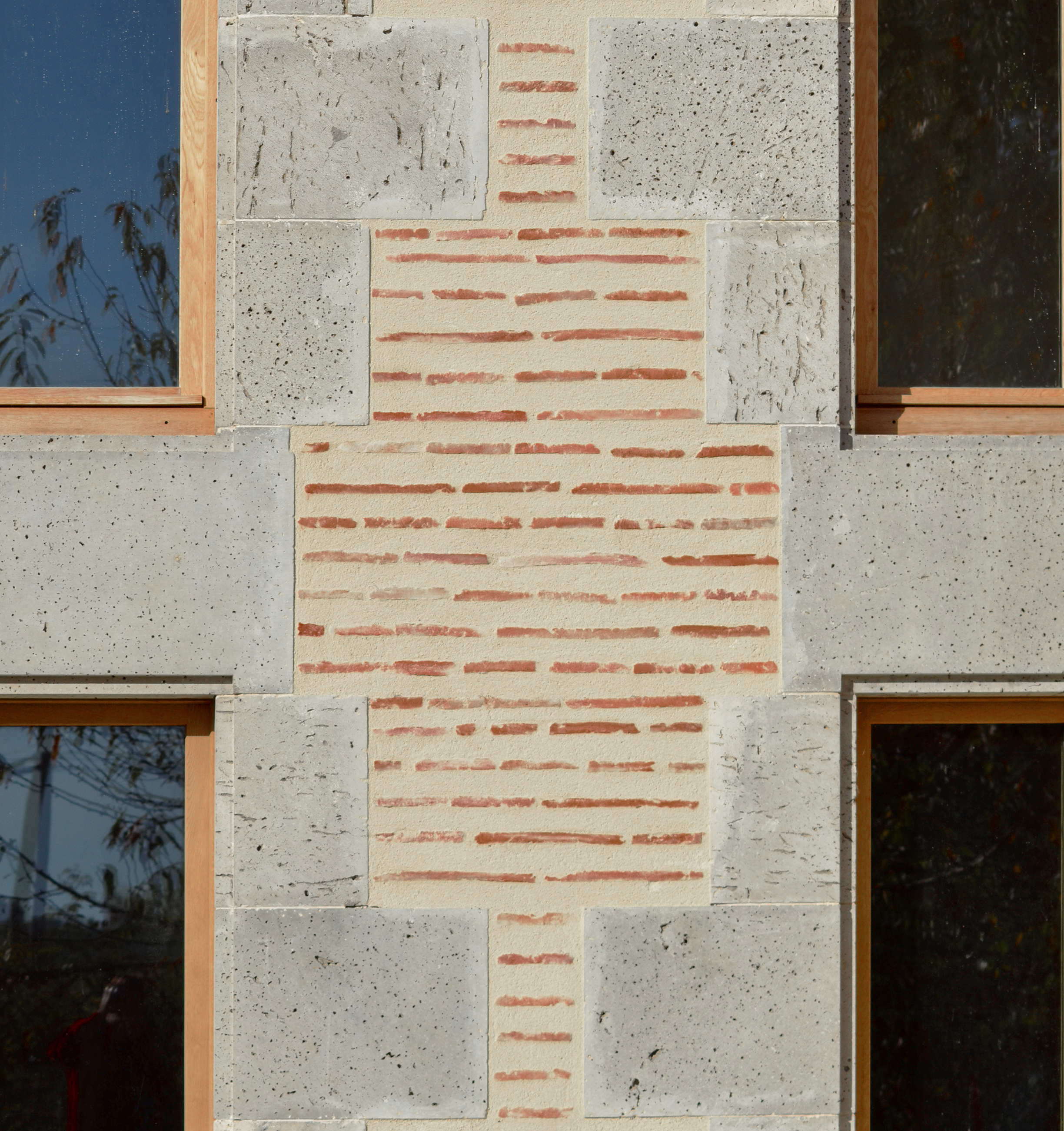
location: Lot-et-Garonne, France
type: private residential, restoration
date: 2025
key materials: reclaimed bricks, lime, timber (oak, douglas, pine), hempcrete, woodwool, reeds, misapor
Two sisters, Ginette and Gillette, lived side by side in adjoining houses for years. Each had its own entrance, staircase, orientation and levels. This double house is now destined to be renovated and unified into a single large house.
The project had to address numerous challenges, both cultural, geographical, thermal and ecological. Firstly, the architecture had to respect the heritage character of the site, adjacent to a 17th-century tobacco factory, a listed monument. Thanks to the unique expertise of craftsmen, the house was carefully renovated using traditional techniques and materials: reclaimed bricks, lime mortar, local stone, terracotta floors and canal-tile roofs, oak lintels, and more.
Secondly, the house is located on the banks of the Garonne River, increasingly threatened by floods. Water can reach a meter inside. To address this, breathable and draining materials were chosen to let water evacuate and to avoid the formation of saltpetre and fungi. On the ground floor, insulating and draining Misapor was laid beneath a lime slab permeable to vapour. On the upper floors, lime-hemp insulation and reed partitions ensure effective hygrothermal regulation.
Third, the region now faces frequent heatwaves due to climate change. To maintain comfort, roof insulation was reinforced well beyond standard levels. Bio-based materials with high thermal phase-shift capacity were selected to slow heat penetration and preserve cool indoor temperatures.
Thus, the choice of natural materials emerged as the best response for respecting the building’s heritage, ensuring its indoor comfort in both summer and winter, for ecologically integrating the house into its bioregion and for creating a crafted, sensory and atmospheric architecture.